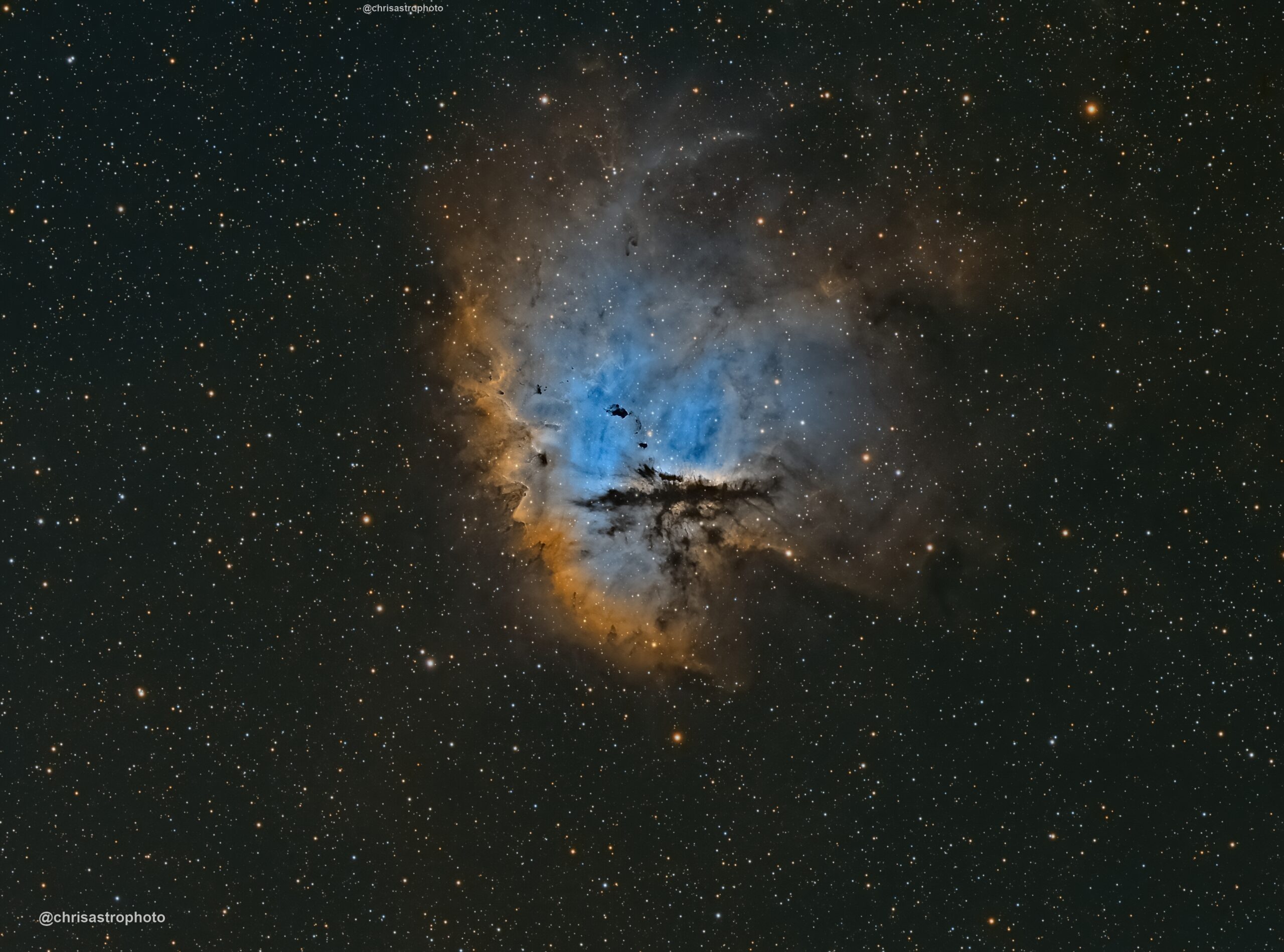 Dark Nebulae
Dark Nebulae
NGC 281 (Pacman Nebula)

Emission Nebula in Cassiopeia associated to star cluster IC 1590. A star forming region about 9500 lightyears from earth.
If you look in the plane of our Milky Way Galaxy you find lots of nebulae like this one. They have developed from cold gas clouds which started collapsing under their own weight some million years ago until density and temperature were so high in some regions, that lots of stars formed – we got star clusters. Young star clusters usually still have hot and massive stars, which eject a lot of powerful stellar winds and emit high energy radiation. This power flux from the stars excites the atoms of the remaining gas so that they can emmit light in the wonderful colors we see here. It also compresses this gas in some regions so strongly, that it starts to collapse again. These bubbles of collapsing gas and dust appear as dark blobs in the foreground of the nebula. They are also called Bok globules named after astronomer Bart Bok, who first observed these blobs in the 1940s and interpreted these objects as we do it today.
Of course colors in that image are a bit exaggerated by the imaging process. But in general the colors in these images, tell us approximately, what material can be found in these gas clouds and what the physical conditions in that regions are.
Deep sky images like this one are notoriously underexposed. In a single shot of 300 seconds you can barely see the nebula, it is very dim and very noisy. Adding more exposure time or combining more single exposures to a final image does mainly one thing: it increases the ratio of signal (the light we WANT to see) to noise – which leads to a better image quality revealing more fine details in the object.
Swipe so see crops and starless versions.
Borg 90FL
1.08 Flattener
ZWO OAG
ASI 2600MM Pro
ZWO EFW
Baader Ultra-Narrowband 3.5/4nm filters
H: 40x300s
OIII:40x300s
SII:41x300s
Total Integration: 10h5m in two nights
Bortle 4-5, average 62% moon illumination
PixInsight
Gimp
Topaz Denoise AI